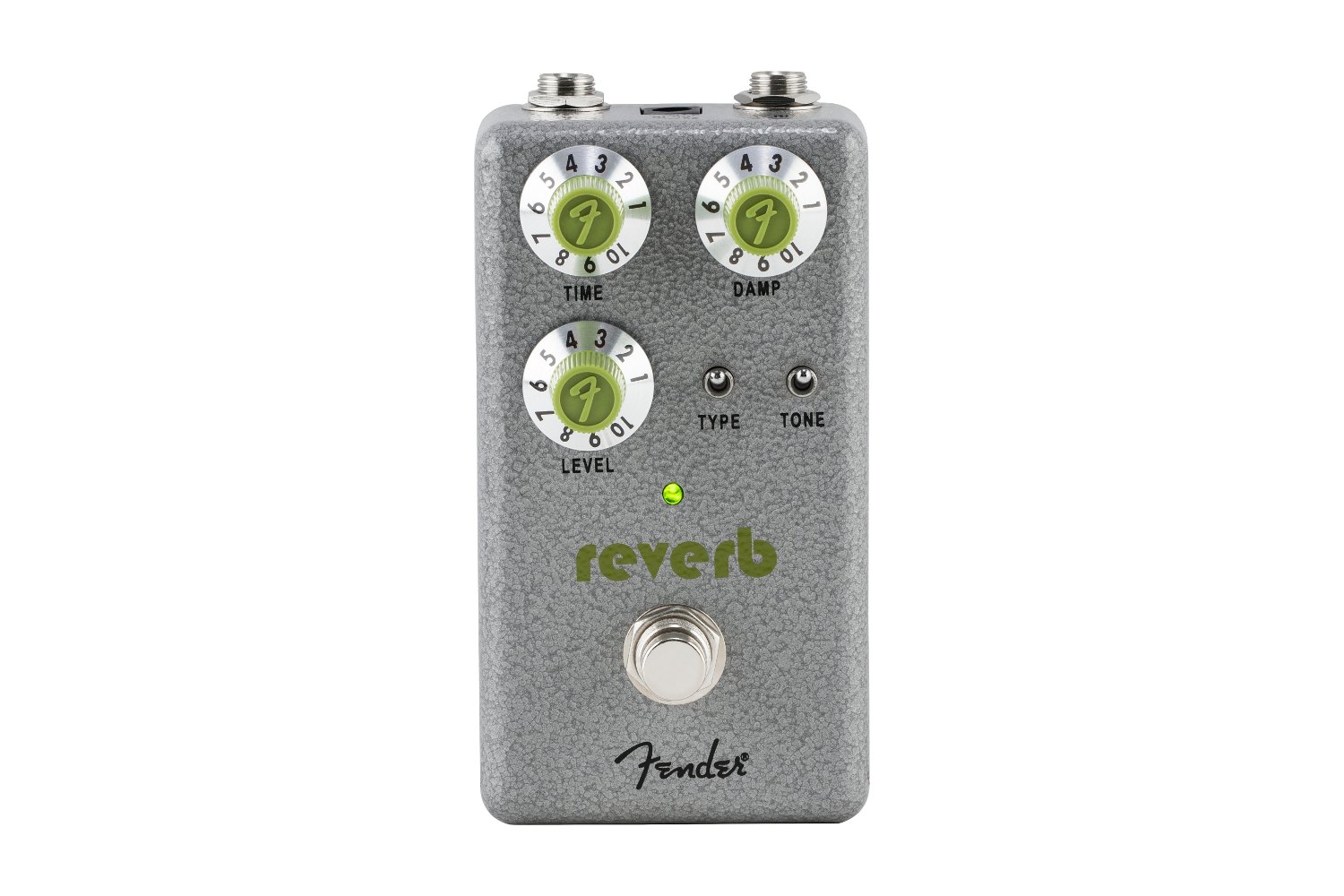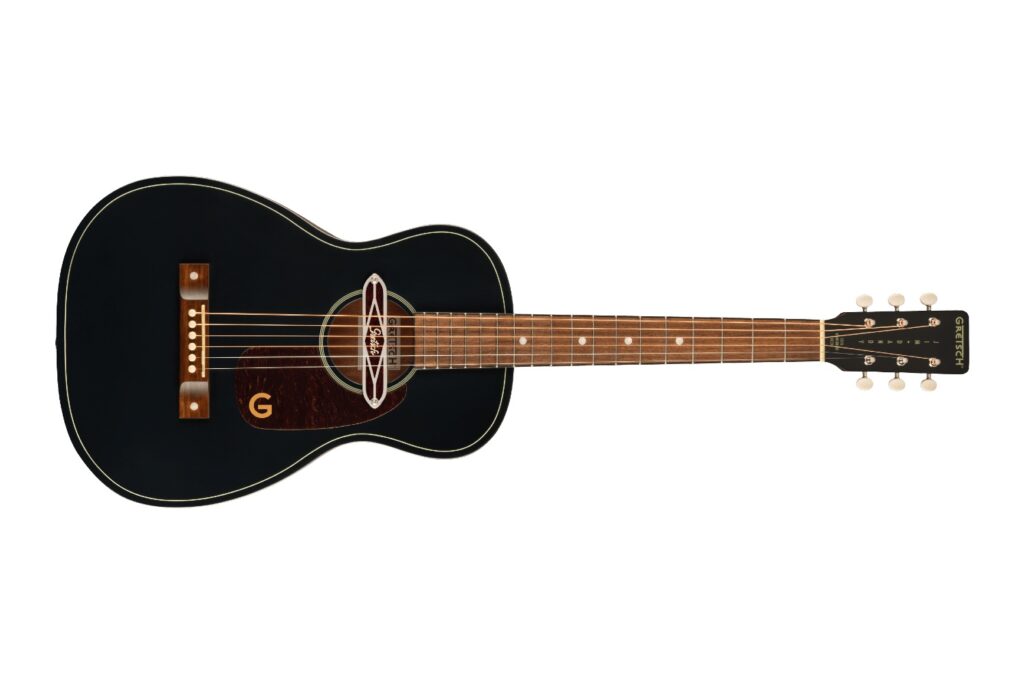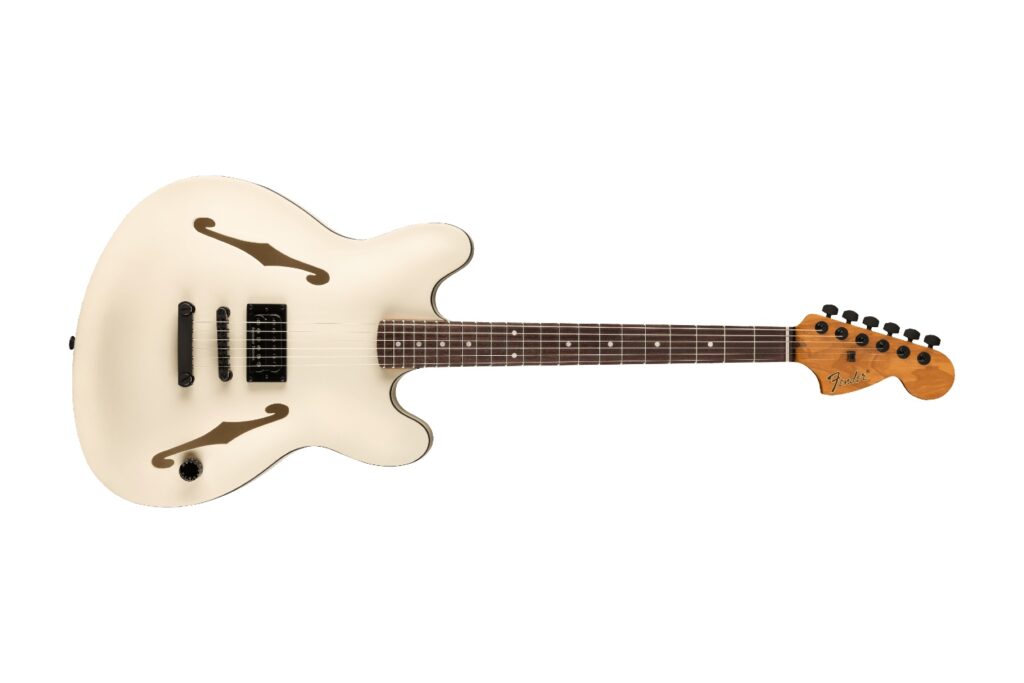Fender Australia | Price: $229
Fender have come a long way since the introduction of their original valve Reverb Unit back in 1961, and in 2022, the demand for a desirable reverb effect is as high as it has ever been. From the metallic drip of the ‘60s surf music boom to the velvety ambience of 21st century dreampop, Fender’s reverbs have been there for the working guitarist, every step of the way.
While a slight departure from Fender’s typical reverb sounds, the Hammertone Reverb effects pedal maintains the quintessential qualities of the company’s amplifiers and effects: this is a sturdy, reliable, and highly functional effects pedal.
Read more product reviews here.
In keeping with the name of this range, the pedal’s aluminium housing is decorated with a robust hammered finish – epitomising the idea that the Hammertone effects are designed to be workhorses of the pedalboard. The three dials for adjusting the time, damp, and level are a classy touch, paying homage to the original iconic Fender ‘F Logo’ control knobs. Paired with the two toggle switches to control reverb type and tone, the Hammertone Reverb is a fairly simple affair – requiring little-to-no messing about to achieve a great sound, straight out of the box.
The power supply input, and ¼” in and out audio jacks are all located at the top surface of the pedal, facilitating a more compact side-by-side configuration of effects pedals on a board, if the player so desires. The pedal also features true-bypass switching, ensuring that no tone is lost in the chain between the guitar and the amplifier.
The Hammertone Reverb features three different reverb effects: hall, room, and plate, which are selected by the three-way toggle switch. The lack of a spring reverb effect is an interesting omission, particularly considering Fender’s iconic spring reverbs of yesteryear, however, the versatility of each of the three reverb types included means that using the Hammertone Reverb is about as far from lacklustre as one could possibly imagine. Alongside the powerful, wide-ranging damp and time parameter controls, these three types achieve reverb effects spanning from gentle ambience, right through to ethereal enchant.

Placing the ‘type’ toggle switch into the upward position engages the hall effect – a gorgeous reverberation that allows the more delicate elements of the midrange to linger on, resulting in a smooth sustain and decay. This effect emphasises the clarity and top-end sparkle without being overly bright, and is underlaid by luscious and sweeping mids and lows. This sweet balance of frequencies that the hall setting generates enables quite a bit of versatility, and thus, suitability for a multitude of genres. When set to a short reverb time, this effect adds a lovely thickness for jazz and neo-soul cleans, while a longer reverb time paired with a fuzz or distortion pedal can easily achieve those classic dirty shoegaze tones. Plug your favourite single coil guitar’s neck position through the Hammertone hall reverb and into a clean amplifier channel for instant aural nirvana.
Moving to the room effect has some clearly audible differences with regards to frequency response compared to the hall setting, but the same glorious essence of the reverb remains. The room sound appears to generate more of a scooped tone – with both high and low frequencies bearing greater emphasis. As a result, note definition and picking accents are crystal clear, and these qualities are complemented by a gentle thump in the low end. Playing arpeggios was extremely satisfying, as the differences in tonal characteristics across the span of the strings added depth and dimension to the overall sound.
Rounding out the effect types is the plate reverb emulation, which boasts a stunning chime in its sustain. Shimmer is a word that comes to mind when describing this mode, as the highs and high-mids seemingly reverberate into the abyss. At the same time, the lower frequencies begin to diminish, which enables long reverb times to be utilised without too much worry of unintentional muddiness while strumming big chords. The tone switch has a great application for this mode, allowing the user to either bring out or diffuse the high-end, but in each use case, the plate reverb is a delightful effect, particularly in its emphasis of the amplifier’s natural harmonics.
Despite the lack of a spring reverb option, the Hammertone Reverb does a brilliant job of providing reverb to an amplifier without an inbuilt spring tank. Testing it into the front of a clean tweed-style amplifier, this pedal was able to provide accurate and articulate ambience to the overall sound, albeit without the classic drip sound of an analogue spring reverb. Additionally, using this effect into the front of a more overdriven amplifier yielded great results, producing a creamy, saturated sound, particularly with the luscious frequency response of the hall mode.
The Hammertone Reverb also excels when being used as more of a feature effect, as one might require for the more spacey genres of shoegaze, dreampop, and slowcore. The versatility between the different reverb types provides a varied selection to choose from, and the powerful damp dial and tone switch enables the guitarist to fine-tune their choice. It was nice to observe that there is no apparent drop or increase in volume with the engagement of the effect, which allows for the seamless introduction of the Hammertone Reverb into the middle of a song.
With a sturdy build, three different effect types, and the controls to allow precise tuning of their sonic characteristics, the Hammertone Reverb embodies all the qualities that make Fender guitars, amplifiers, and effects so popular. This is a great choice for those wishing to add an organic reverb to their amplifier, and would also make a great addition to the pedalboard of any guitarist looking for some versatile ambience.

Head to Fender for more information.







